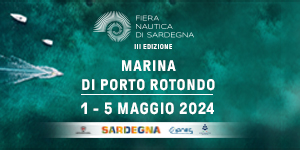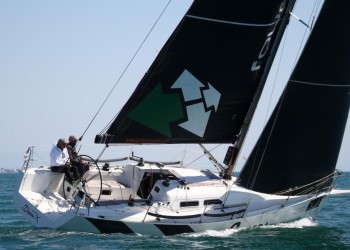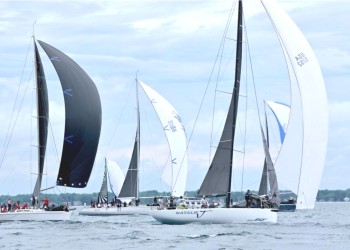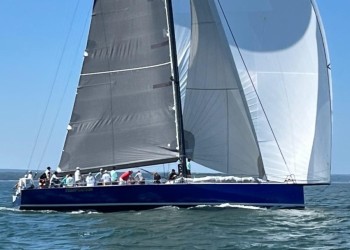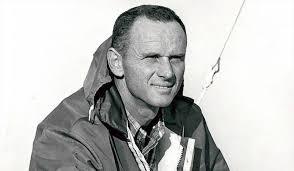
Lowell North
1929 - 2019. Remembering Lowell North, founder of North Sails
There are few legends in this sport that have had as much influence on improving the performance of racing sailboats than Lowell North. His early educational background in engineering prompted a rational and scientific approach to designing and building sails that was ahead of its time in the 1950’s and 1960’s. His methodical and measured approach of experimentation and isolating variables allowed him to not only preserve and reproduce fast sail shapes but to also understand the forces on sails and how they related to the qualities and properties of sail cloths.
Starting famously as a teenager who with fellow San Diegan Malin Burnham won the Star Class World Championship in 1945 at the ripe old age of 15, thanks to his tinkering with his mainsail shape to be the fastest in the fleet. A university education in engineering had him working for a time in aerospace composites before he made the leap to full-time sailmaking, and with continued success on the race course in Stars (his first Worlds title earned in Havana in 1957, with more to come) he started building sails for other one-designs as well, such as Dragons.
ORC Management Committee member George Andreadis recalls “At the 1964 Olympics, I happened to be on my Flying Dutchman GR16 “NEFELI” whilst being towed to the starting line just next to Lowell, who won Bronze that year in Dragons. And while on his Star four years later at the Acapulco Olympics, he and crew Peter Barrett broke the main halyard whilst hoisting the mainsail and in a difficult sea state with large Pacific rollers they managed to lower the mast and feed the sail up the mast groove and lash it to the top. Then in these difficult conditions they re-stepped the mast and subsequently went on to win the Gold medal.
“And in the 1961 European Championship of the Lightning Class I sailed with sails made by Lowell with no logo, just stamped with North Sails Co, San Diego.”
His leap into the big boat world came much later after Olympic success and intersection with other highly talented sailors he met who shared his vision to build an innovative company to provide sails to the world’s best sailors. The addition of these “Tigers” to the North Sails stable brought opportunities to expand his sailmaking to a market of big boats that were using numerous other brands. A focus on new materials and new ideas on design soon proved these sails fast, and the iconic NS logo started appearing in places ever seen before, like the America’s Cup and soon Admiral’s Cup and other offshore events.
In many of these Lowell himself came with the sails, where his prowess helped win major championships, and an alignment with other upstart sailing design talent (such as Doug Peterson, another San Diegan) proceeded to show the sailing world new ways towards speed. Just as with Stars, Lowell would himself tinker with multiple high-profile big boat projects, ranging from IOR One Tonners and Two Tonners to 12 Meters in the America’s Cup.
Alessandro Nazareth, current Chairman of the ORC’s International Technical Committee, recalls “I remember PIED PIPER winning the 1975 One Ton Cup (IOR 27.5) in Newport with Lowell steering her. She was a development of GANBARE, Doug Peterson’s breakthrough IOR 27.5 design, that ORC Deputy Chief Measurer Nicola Sironi recalls was brought to Italy where Lowell led the expedition to race the One Ton Cup in Porto Cervo with several sailing stars who were then to be born as Doug Peterson, Ron Holland, Bill Green, and Gary Weisman.
“He was also at the One Ton Cup in Marseille in 1976, and in Naples in 1980 on Sharkey, an innovative Holland design which was considered the fastest boat but due to a bad result was beaten by Filo da Torcere, a Vallicelli design. I was a young sailor at the time, and intimidated by the big names competing in the race: Lowell, Elvstrom, Kolius, and Cudmore among others, and being congratulated by Lowell for the victory is an unforgettable memory. Lowell’s vision of the “bigger picture” in the world of sailing has always been an example to follow”.
For ORC Chairman Bruno Finzi, he says “The best memory of Lowell for me is the Admiral’s Cup 1985. Lowell was sailing SLEEPER, a [Nelson/Marek-designed] two-tonner on the US team, and I was on BRAVA, the Vallicelli One Tonner. We had a very rough series that year, and Lowell was a tough competitor.”
Having helped sail SLEEPER back across the Atlantic himself, Lowell’s team would go on to win their class later that winter in the SORC, then the Kenwood Cup and St Francis Big Boat Series, with ORC Communications Director Dobbs Davis on board for this last of Lowell’s major sailing campaigns.
Fair winds Lowell, we will all miss you.





